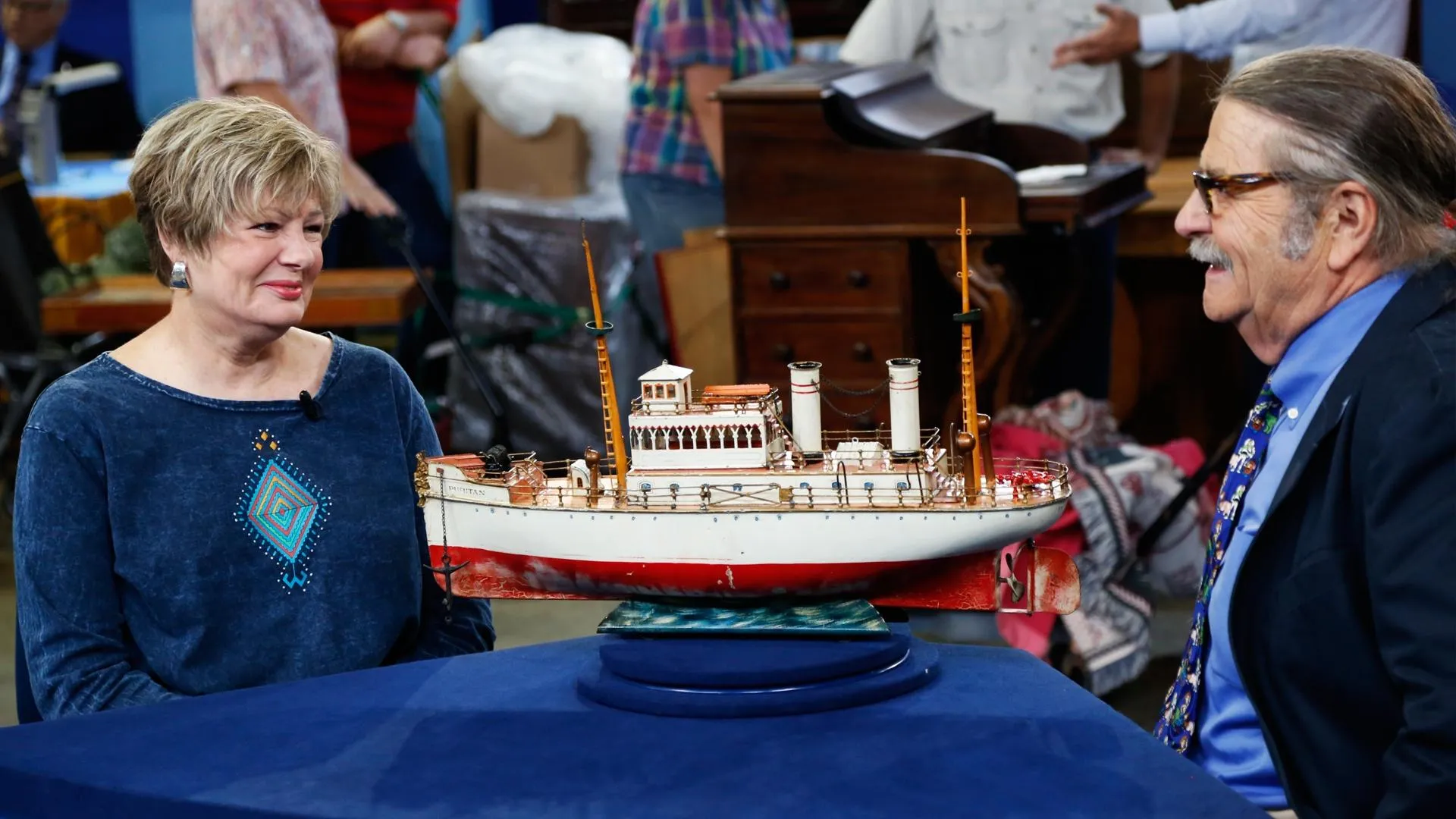GUEST: I got it from my grandmother, and she got it from a moving and storage company in St. Louis. 1939 is when she got it, and she paid $25. That was money she'd saved up. That was the Depression, so she didn't have much money. But she makes hats, and even in the Depression, everybody has to have a hat.
APPRAISER: That's a lot of money back then.
GUEST: It was!
APPRAISER: It's in remarkably good condition. How did it stay so clean all these years?
GUEST: Well, I guess everybody just walked around it. But in my house, I have a fish line that I tied it to the wall. When we got ready to come out here, my son was going to load it up and he couldn't pick it up and he was pulling on it and pulling on it and I said, "You gotta cut that fish line loose!" (laughs)
APPRAISER: This is in great condition, not just because there aren't chips and cracks and other damages, but it's so clean, it's so bright. What happens, especially with an umbrella stand, if you drop an umbrella in with a metal tip to the umbrella, you put a hairline in the bottom of it. You have a vacuum cleaner whack into the base and it takes a chip out of it. So much goes wrong. Dirt accumulates, and grease and nicotine over the years and dulls the colors. This thing is perfect. This is a Roseville umbrella stand, and I think you said earlier you thought it might be.
GUEST: It isn't marked at all. I have a lot of bowls and they're marked.
APPRAISER: Well, the earlier Roseville is often not marked. This period, this middle teens period, you very often seen pieces that are unmarked.
GUEST: 1910s?
APPRAISER: I think 1916, 1918, thereabouts. This is an example of Roseville's Persian line, which started sometime before 1916. And I don't know why they call it Persian-- maybe because they think Persian material is so brightly colored. It's also called a creamware line, creamware because of this whitish background. You don't really see it this perfect and you don't see it this colorful. It's a really well-designed and handsome piece. This was the transition between when Roseville was doing hand decorated work and doing straight production work, which was commercial. This is in between the two. There is hand painting inside of a template where an outline is applied to the surface of it. So it's certainly not a straight hand decorated, one-of-a-kind piece, but it's not a mass-produced production piece with decals either. Usually, you see one of these, and I have seen this form with this idea before and there's some damage, and they bring $400, $500, $600. This is the cleanest example-- there can't be a cleaner one out there. This is as good as it gets, and I think at auction, I'd estimate it for somewhere between $1,700 and $2,300.
GUEST: Oh, my goodness! (chuckling) I just can't imagine that. You hear a noise? It's my mother turning over in her grave. (laughs)
GUEST: Oh, my goodness! (chuckling) I just can't imagine that. You hear a noise? It's my mother turning over in her grave. (laughs)











